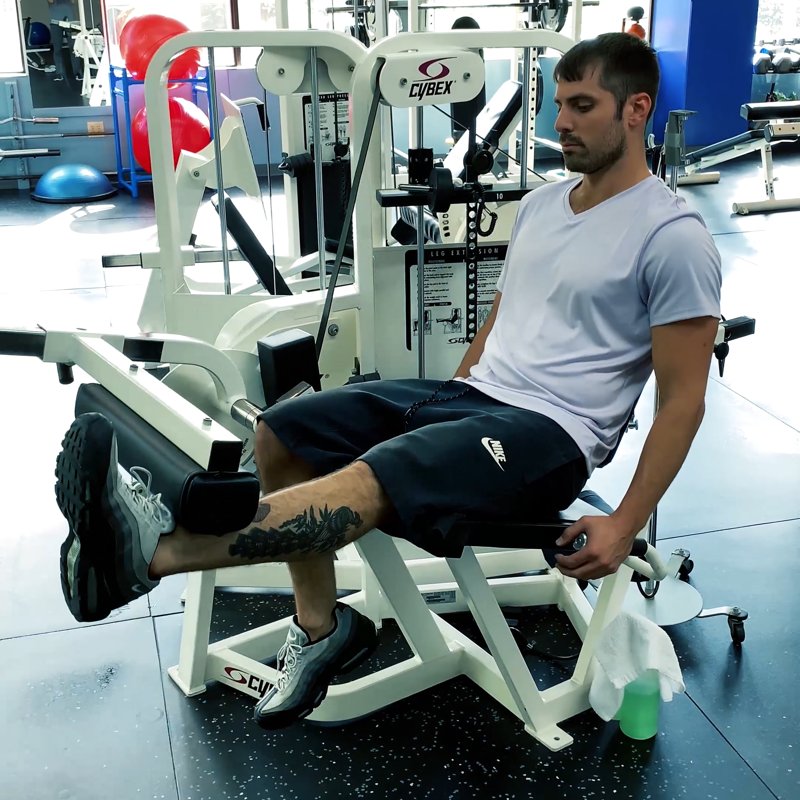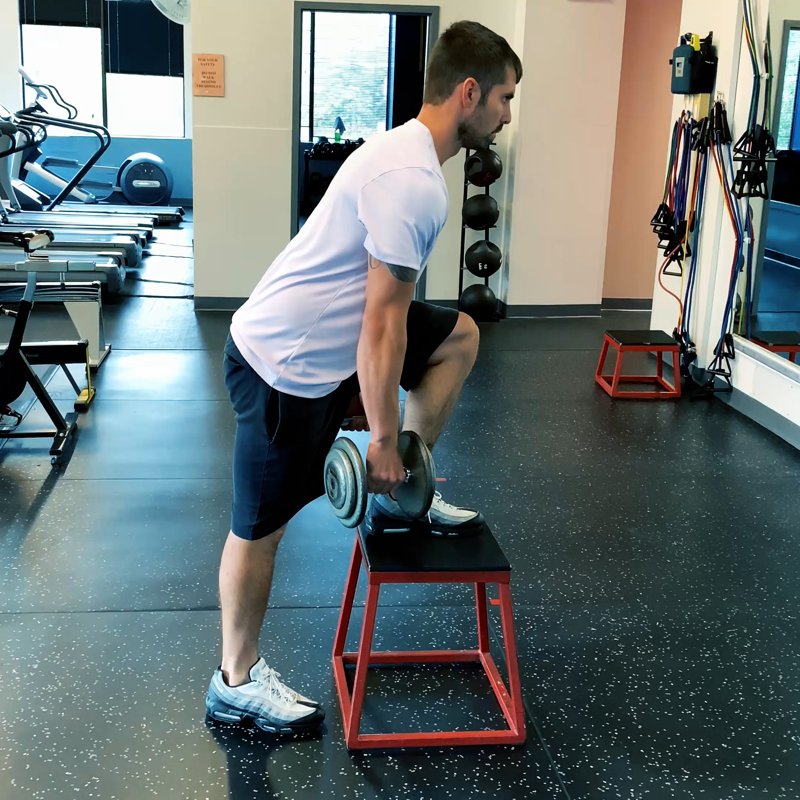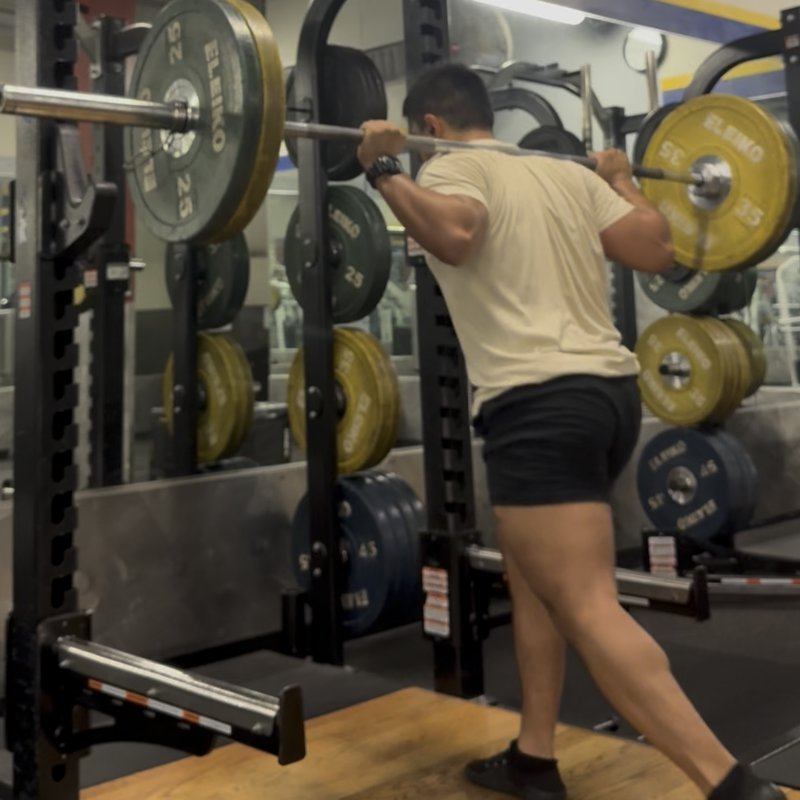Smith Machine Squat: The Ultimate Guide
The Smith Machine Squat is a compound lower body exercise performed on a Smith machine that primarily targets the quadriceps, hamstrings, and glutes through a guided vertical movement pattern.
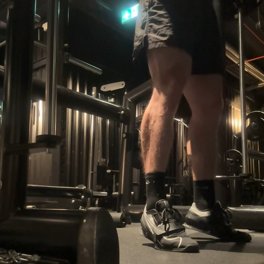
Quick Facts
Key Benefit
Quad-focused leg development with reduced stabilization demands
Primary Muscles
Glutes, Hamstrings, Quadriceps
Secondary Muscles
Abdominals, Calves, Erector Spinae, Hip Adductors, Traps
Equipment
smith machine
Difficulty
Beginner
Type
Compound
In This Guide
Ready to master the Smith Machine Squat?
Track your progress, see improvements over time, and build strength consistently.
Download GravitusThe Smith Machine Squat stands as one of the most accessible and versatile lower body exercises, offering unique benefits for beginners, rehabilitation scenarios, and specialized training protocols. Unlike the traditional barbell squat that requires significant balance and coordination, the Smith machine's guided vertical bar path provides enhanced stability while still effectively targeting the primary leg musculature.
What makes the Smith Machine Squat particularly valuable is its ability to isolate specific muscle groups through foot positioning adjustments, reduce the learning curve for proper squatting mechanics, and allow for safe training to muscular failure without the need for spotters. While purists might favor free-weight variations, the Smith machine version offers distinct advantages for hypertrophy-focused training and those with certain mobility limitations.
Whether your goals include building leg size, rehabilitating from injury, learning proper squatting mechanics, or simply adding variety to your lower body training, the Smith Machine Squat delivers reliable results with lower technical demands than its free-weight counterparts. When programmed appropriately and executed with proper form, this exercise serves as an excellent complement to—or occasional substitute for—traditional squatting variations in a comprehensive strength training program.
Benefits of the Smith Machine Squat
The Smith Machine Squat offers several distinct advantages that make it a valuable addition to many training programs.
Enhanced Safety
The fixed bar path and lockout mechanisms reduce the risk of falling or becoming trapped under the weight, allowing for confident training without spotters.
Quadriceps Emphasis
The vertical bar path and ability to position feet further forward places greater emphasis on the quadriceps compared to traditional squats, making it excellent for targeted quad development.
Reduced Stabilization Requirements
The guided motion decreases the need for balance and stabilization, allowing for greater focus on working the primary muscle groups to fatigue.
Foot Position Versatility
Unlike barbell squats, the Smith machine allows for various foot positions (forward, directly under, or behind the bar) to shift emphasis between different leg muscles.
Rehabilitation Applications
The controlled environment makes it useful for rehabilitation protocols where limited ranges of motion or precise movement patterns are required.
Training to Failure Safely
The ability to hook the bar at any point during the movement allows for safely training to muscular failure, an important factor for hypertrophy-focused training.
Proper Form & Technique
Setup
- Adjust the Smith machine bar to an appropriate height that allows you to comfortably unrack it with a slight bend in your knees.
- Position yourself under the bar with it resting across your upper back/trapezius region (high bar) or slightly lower across the rear deltoids (low bar).
- Grasp the bar with both hands at a comfortable width that allows for a stable upper back position.
- Place your feet in your chosen position—typically slightly in front of the bar for quad emphasis or directly under for a more balanced approach.
- Set your feet at approximately shoulder width or slightly wider, with toes pointed slightly outward (around 15-30 degrees).
- Unrack the bar by rotating the hooks and establish a tall, braced position before beginning the descent.
Descent
- Initiate the movement by breaking at the hips and knees simultaneously.
- Keep your chest up and maintain a neutral spine position throughout the descent.
- Control the downward motion, taking 2-3 seconds for a controlled eccentric phase.
- Descend until your thighs are at least parallel to the floor, or deeper if your mobility allows and your goals require it.
- Keep your weight distributed evenly across the entire foot, avoiding excessive forward lean or shifting to the toes.
- Maintain tension in your core and upper back to provide a stable platform for the movement.
Ascent
- Drive through your entire foot to initiate the upward movement, focusing on pushing the floor away.
- Keep your chest up and core braced as you extend your knees and hips.
- Maintain a consistent bar path, allowing the machine to guide the vertical movement.
- Continue extending until you reach the starting position, avoiding excessive lockout or hyperextension of the knees.
- Complete the repetition by achieving full extension without relaxing your core or upper back.
- If performing multiple repetitions, maintain tension and immediately begin the next rep; if finishing the set, re-rack the bar by engaging the hooks.
Key Form Tips
Foot Position
Experiment with foot placement—further forward emphasizes quadriceps, while directly under the bar creates a more balanced muscle recruitment pattern.
Bar Path
Allow the machine to guide the vertical movement, but focus on moving your body around the bar naturally rather than forcing an unnatural pattern.
Depth Consideration
Squat to a depth that maintains proper form and aligns with your goals—parallel is generally sufficient for most purposes, though deeper squats can increase range of motion and muscle activation.
Core Engagement
Maintain a braced core throughout the entire movement to protect your spine and maximize force transfer.
Knee Tracking
Ensure your knees track in line with your toes throughout the movement, avoiding excessive inward collapse or outward push.
Breathing Pattern
Inhale during the descent and exhale forcefully during the ascent to enhance core stability and power output.
Muscles Worked
Primary Muscles
- Quadriceps: The four muscles of the front thigh (rectus femoris, vastus lateralis, vastus medialis, and vastus intermedius) are the primary movers, responsible for knee extension during the ascent phase of the squat.
- glutes: The largest muscle in the gluteal group works powerfully during the ascent, particularly as you rise from the bottom position, contributing to hip extension.
- Hamstrings: This group of three muscles at the back of the thigh assists in hip extension during the ascent and provides stability during the descent phase of the movement.
Secondary Muscles
- hip adductors: The inner thigh muscles assist in stabilizing the hip joint throughout the squatting motion, particularly with wider stance variations.
- Erector Spinae: These lower back muscles work isometrically to maintain spinal position throughout the exercise, providing crucial support for the torso.
- abdominals: The abdominals, obliques, and deeper core muscles activate to stabilize the spine and pelvis during the movement, particularly under heavier loads.
- Calves: The gastrocnemius and soleus provide ankle stability and assist in force production during the ascent, particularly with more forward foot positions.
- traps: The trapezius, rhomboids, and rear deltoids work isometrically to support the bar position and maintain upper body positioning.
Common Mistakes and How to Fix Them
Improper Foot Placement
Positioning feet too far back can cause excessive forward lean and knee strain, while too far forward can reduce overall muscle recruitment. Experiment methodically with foot positions based on your goals—begin with feet directly under the bar for balanced muscle recruitment, then adjust forward for more quad emphasis or slightly back for more posterior chain involvement. Mark successful positions on the floor with tape for consistency between workouts. Remember that optimal foot placement varies by individual body proportions and mobility levels.
Insufficient Depth
Not squatting deep enough (at least to parallel) limits muscle development and range of motion benefits. Gradually work on mobility to achieve appropriate depth while maintaining proper form. Practice with lighter weights, focusing on descending until thighs are at least parallel to the floor. If mobility is limiting depth, incorporate specific hip and ankle mobility drills into your warm-up routine. Consider using a box or bench set at the appropriate height as a depth guide until you develop consistent movement patterns.
Rising onto Toes
Shifting weight forward onto the toes during the ascent reduces stability and power output. Focus on maintaining whole-foot contact throughout the entire movement, thinking about pushing through the middle of the foot rather than just the toes. Practicing "spreading the floor" with your feet can help maintain proper weight distribution. If the problem persists, check your ankle mobility and consider using a small plate under your heels temporarily while working on flexibility.
Knee Valgus (Caving In)
Allowing knees to collapse inward during the movement increases injury risk and reduces effectiveness. Focus on actively pushing your knees outward in line with your toes throughout the entire movement. Strengthening your glute medius with targeted exercises (band walks, clamshells) can improve lateral stability. Using a resistance band around the knees during warm-up sets creates a proprioceptive cue to maintain proper knee position during working sets.
Excessive Forward Lean
Bending too far forward shifts emphasis away from the quadriceps and increases lower back stress. Maintain a more vertical torso position by keeping your chest up and core braced throughout the movement. If forward lean is persistent, check for mobility limitations in your ankles and hips that might be forcing compensation. The Smith machine should help maintain a more vertical position compared to free squats, so focus on using this advantage rather than fighting against the fixed bar path.
Relaxing at the Top
Completely relaxing at the top position between reps reduces tension and effectiveness. Maintain muscle tension throughout the entire set by avoiding full lockout or relaxation between repetitions. Keep a slight bend in the knees at the top position, essentially stopping just short of full extension. This tension-focused approach increases time under tension for better muscle development, particularly when hypertrophy is the goal.
Exercise Variations
Foot Position Variations
-

Forward Foot Smith Squat
Positioning feet 6-12 inches in front of the bar to increase quadriceps emphasis and create a more upright torso position, similar to a hack squat.
-

Neutral Foot Smith Squat
Placing feet directly under the bar for balanced muscle recruitment between quadriceps and posterior chain muscles.
-

Wide Stance Smith Squat
Using a stance wider than shoulder width with toes pointed outward to increase adductor and glute medius activation.
-

Narrow Stance Smith Squat
Positioning feet closer together (about hip-width) to emphasize the outer sweep of the quadriceps and create a deeper range of motion.
Depth and Range Variations
-
Smith Half Squat
Performing the movement to approximately half depth (above parallel) to emphasize the top range of the movement or work around certain mobility limitations.
-

Full-Depth Smith Squat
Descending until the thighs are below parallel with the floor (as mobility allows) to maximize range of motion and glute activation.
-

Box Smith Squat
Using a box or bench to provide a consistent depth target and create a brief pause at the bottom position, eliminating momentum and enhancing muscle activation.
-

Pulse Smith Squat
Performing small, partial-range repetitions at the bottom position to increase time under tension and metabolic stress in the working muscles.
Loading Variations
-

Front Smith Squat
Positioning the bar across the front of the shoulders rather than the back, which creates a more upright torso position and increases quadriceps demands.
-
Paused Smith Squat
Adding a deliberate pause (2-4 seconds) at the bottom position to eliminate the stretch reflex and increase time under tension.
-

Tempo Smith Squat
Manipulating the speed of different phases of the movement, such as a slow 4-second descent followed by an explosive ascent, to emphasize different training adaptations.
-

Bulgarian Split Smith Squat
Performing a single-leg variation with the rear foot elevated on a bench, creating greater demands on balance and unilateral strength development.
Frequently Asked Questions
Smith Machine Squats and barbell squats each offer distinct advantages, making direct comparisons about effectiveness challenging without considering specific training goals. For pure strength development and athletic performance, free-weight barbell squats generally provide superior results due to their greater stabilization requirements, natural movement patterns, and transferable skill development. However, for muscle hypertrophy (growth), Smith Machine Squats can be equally effective or even superior for some individuals, as they allow for greater focus on the working muscles with reduced concern about balance and coordination. The fixed bar path of the Smith machine also permits specialized foot positions that can target specific muscle groups more directly. Additionally, the Smith version allows for safely training to muscular failure without spotters, which can be valuable for hypertrophy-focused training. Rather than viewing these exercises as competitors, consider them complementary tools that can be strategically implemented within a comprehensive program—barbell squats for developing functional strength and coordination, Smith Machine Squats for targeted hypertrophy work, rehabilitation scenarios, or as a variation to prevent plateaus and overuse injuries.
Foot positioning during Smith Machine Squats significantly impacts muscle recruitment patterns and should be adjusted based on your specific goals. For balanced development, positioning your feet directly under the bar (where they would naturally be during a barbell squat) creates relatively equal stress distribution between the quadriceps and posterior chain muscles. To emphasize quadriceps development, placing your feet 6-12 inches in front of the bar creates a more upright torso position and shifts greater emphasis to the front thigh muscles—similar to a hack squat. For greater hamstring and glute involvement, positioning your feet slightly behind the bar increases hip flexion demands. Stance width also matters—a wider stance with toes pointed outward increases adductor and glute medius involvement, while a narrower stance emphasizes the outer quadriceps. The best approach is to experiment methodically with different positions based on your goals, flexibility, and individual biomechanics. Once you identify effective positions for different training objectives, consider marking them on the floor with tape for consistency between workouts. Remember that optimal foot placement varies significantly between individuals based on limb lengths, hip structure, and mobility factors.
Optimal squat depth depends on your specific goals, mobility limitations, and individual anatomy. For most trainees seeking balanced muscle development, descending until your thighs are at least parallel to the floor (femurs horizontal) provides an effective range of motion that engages the quadriceps, hamstrings, and glutes through a substantial portion of their functional range. Squatting deeper—below parallel, where hip crease drops below the top of the knee—generally increases glute activation and overall muscle recruitment, making it valuable for maximum development. However, depth should never come at the expense of proper form. If you notice your lower back rounding, heels rising, or knees caving inward as you descend deeper, limit your depth to the point where you can maintain proper alignment. The Smith machine's stability allows many lifters to achieve greater depth than with free weights, but this should be approached gradually as mobility improves. If you're training specifically for powerlifting carryover, matching the depth you use in your competition-style squats creates more direct transfer. For rehabilitation purposes or when working around specific limitations, partial ranges may be deliberately programmed, but most trainees should work toward achieving at least parallel depth for comprehensive development.
When performed with proper form and appropriate loading, Smith Machine Squats are not inherently harmful to the knees or back. However, the fixed vertical bar path does create different joint mechanics compared to free-weight squats, which some individuals find more or less comfortable based on their individual structure. The primary concern with knee health is ensuring proper tracking—knees should move in line with the toes throughout the movement, without excessive inward collapse. Foot positioning significantly impacts knee stress; many find that a slight forward foot position (4-8 inches in front of the bar) creates a more vertical shin angle that reduces anterior knee stress. For back health, maintaining a neutral spine position and proper bracing throughout the movement is crucial. The fixed path actually helps some individuals maintain better spinal position compared to free squats where forward lean can increase. If you experience persistent knee or back discomfort with Smith Machine Squats, consider: 1) modifying foot position to find a more comfortable alignment, 2) adjusting depth to remain within a pain-free range, 3) reducing load to ensure proper form maintenance, or 4) consulting with a qualified physical therapist or sports medicine professional who can assess your individual mechanics. Remember that appropriate exercise selection should be based on individual response rather than generalized claims about certain exercises being bad for particular joints.
The optimal frequency for Smith Machine Squats depends on your overall program design, recovery capacity, and specific goals. For general strength and hypertrophy purposes, most trainees benefit from training each muscle group 2-3 times per week, with the Smith Machine Squat potentially included in 1-2 of those lower body sessions. If following a traditional body part split, you might perform Smith Machine Squats on your designated leg day once per week. For upper/lower splits, they could be included in one of your two weekly lower body workouts. With full-body training, they might appear 1-3 times weekly depending on the rotation of exercises. Consider varying the application across different training sessions—for example, using heavier loads and lower repetitions (5-8) in one session for strength emphasis, then lighter loads with higher repetitions (10-15) in another session for metabolic stress and hypertrophy. The machine's reduced recovery demands compared to free-weight squats may allow for slightly higher frequency in some cases, but overall volume should still be managed to prevent overtraining. Pay attention to performance indicators—if strength decreases between sessions or you experience persistent soreness, you may need more recovery time or reduced volume. For most trainees, 1-2 sessions per week including Smith Machine Squats, with at least 48-72 hours between sessions targeting the same movement pattern, provides an effective stimulus while allowing sufficient recovery.
Video Demonstrations
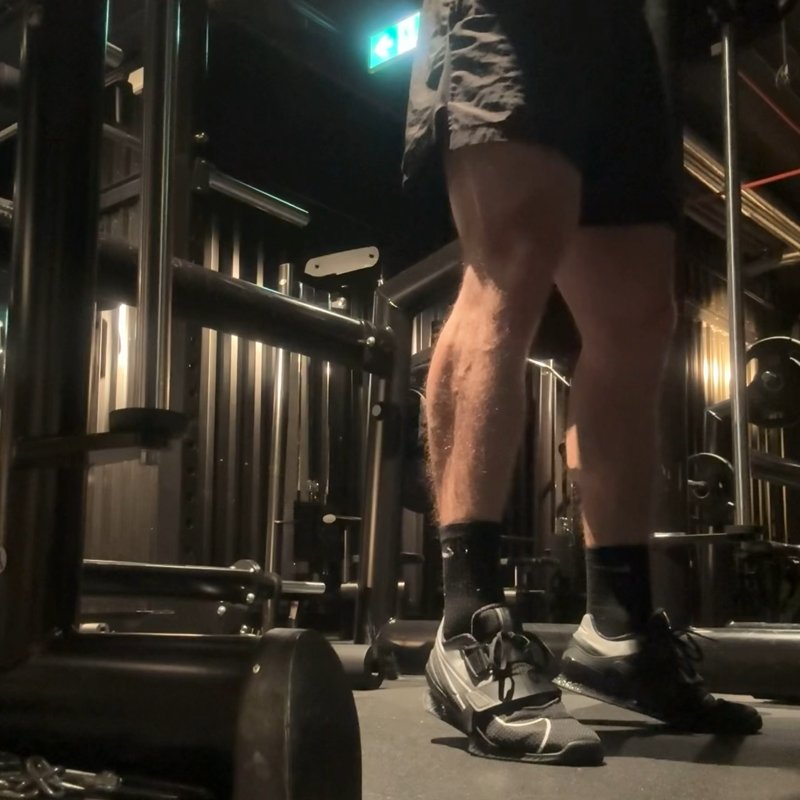
Log in to watch video demonstrations
Login to Watch3 video demonstrations available
Find more video demonstrations in the Gravitus app
Tips from the Community
-

Bad idea
-

Wear squat shoes and put your feet out in front. Treat this like a leg press
-

CONTROL DESCENTTTT
Track your progress with Gravitus
Download Gravitus to log your workouts, track your progress, and join a community of fitness enthusiasts.

Helpful Resources
One Rep Max Calculator
Find your one rep max for any exercise without maximal testing. Essential for developing effective strength training programs.
Calculate 1RMWorkout Programs
Follow structured workout programs created by fitness professionals to maximize your strength and muscle gains.
View Programs
